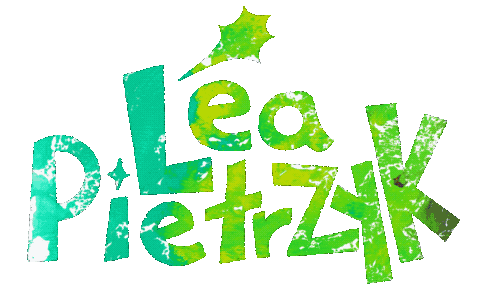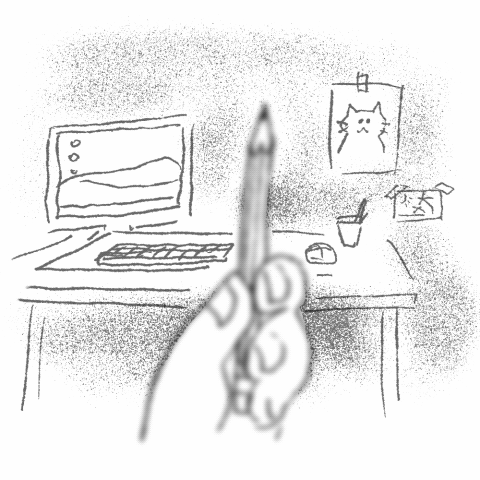Storyboard Stories: Tips from Storyboard to Illustration
Tips and tricks time !
Hi it's Lea!
If you don't know me I’m a storyboard artist working on animation feature films and I’m also an illustrator! Here are some illustrations I have done as weekend projects since I joined Substack ( I share the process of each illustration every Sunday):
Illustration and animation storyboards are both ways of telling a story through images, but they each have their own language. That said, Storyboard can be super helpful when planning out illustrations. And Illustration can bring uniqueness and graphic qualities to a storyboard.
Some old Storyboard / Storybeats panels from school exercices during my Master’s degree.
Now there are a lot of resources for learning about storyboards for film, my favorites would be Sketchbook: Composition Studies for Film by Hans Bacher or Studio Ghibli Ponyo Complete Storyboard. (Okay, the latter more for the beauty than for the learning.)
Hans Bacher on the left, and Studio Ghibli on the right
But I have yet to find good resources of storyboard for Illustration ( If you do know some, comment below ! I'm always happy to find new sources of learning.) So here are some tips that I use every day in my job as a Storyboard Artist that I also use in my illustration work. If you’re a fellow illustrator maybe it can help you too!
1. Layout your scene
You have an idea for an illustration, great ! Where is it set ? Inside? Outside? In outer space ? An illustration is a series of decisions, and most of them happen in the layout stage. A lot of questions can emerge about your character and their relationship to their environnement. What is their personality? Are they trying to fit in? Or stand out? If you’re illustrating a kid in their bedroom, you can infuse a lot of details about their personality with simple choices. Is their room messy? Or tidy? Do they have drawings on the walls? Do they collect anything ? Etc… You can also do a little floor plan to layout furniture, or important background elements.
Meet our test subject for our storyboard exercise, my cat Obi
2. What is your format?
Okay, a bit of film technical theory ahead but bear with me ! In a film, the format, or image ratio is “usually” the format of the screen. This has changed a lot during the history of cinema following the development of the size of film. When making a film, the choice of what image ratio to pick depends a lot on what the film is about and what does the director wants to show.
For example the 4:3 image ratio, very associated to the golden age of the silver screen, has been making a comeback for years. But why are movie directors choosing to make their film in an outdated format? Well there is a big part of nostalgia for sure. But also the format is so narrow that the character is very confined on screen, and there isn’t much space for the background. It’s great for intense character driven narrative, like The Lighthouse by Robert Eggers. ( great film btw! A bit scary though. I get frightened very easily )
Look how trapped we feel in this frame!
The standard format 16:9 is the most used image ratio. Very common for TV, it’s the perfect balance between Background and characters. Or for showing equally big things and small things, like for example Jurassic Park by Steven Spielberg.
And finally wide aspect ratios, like CinemaScope or Panavision (2,35:1), are for wide landscapes in which characters look really small and lost. Perfect for westerns, grand epics and Road trip movies ( like Little Miss Sunshine by Jonathan Dayton and Valerie Faris.)
What a gorgeous scene and frame, if you haven’t seen this film, stop what you’re doing and watch it. Now.
Okay, going back to illustration. Just like a movie director choosing the best format ratio for their film, you need to pick the best image format for your illustration.
A new question has appeared ! : Should I draw in portrait or landscape?
Easy answer would be, if your subject is standing and you want a full body drawing of your character close to the camera = Portrait. If your subject is lying down, or far away from the camera, along the horizon of your background = Landscape.
Another answer :
What is happening in your illustration? What is the action? If there is movement, like a character running, dancing, ice skating, etc… the image ratio should let you follow the arc of the action your character is doing. If you’re drawing a squirrel running up a tree, a portrait format would allow you to show the trail of action up the tree and give an impression of the height of the tree. If your character is a kid running in the street because he’s late for school, a landscape format is more appropriate.
3. Move the camera around like a real camera
Think of the storyboard as taking pictures of your subject with a camera, to find the best angle to tell your story.
You want to be far away if you want to show your subject tiny in the background, or really close to catch an interesting change of emotion. And have fun with it ! Really go around your subject and imagine how the scene would look like from the back, profile, up a tree looking down, or from the ground etc…
If it seems a bit abstract, or you’re trying to plan an illustration with a lot of elements and you’re struggling to find new interesting angles, build a little real life set! With folded paper for walls, bits of cardboard, anything that can help you figure out the layout. And take pictures of it to draw over them as references! Or if you’re feeling brave, learn a bit of 3D and build a little set in a 3D software and take screenshots. ( Blender is free and although the learning curve is scary, you can learn anything on YouTube ).
Some old 3D layout & framing tests during my Master’s degree
4. What is your camera focusing on?
Our eyes are not that different from a lens on a camera. We can open and close them to let in more or less light, and we can adjust our focus range at will.
Okay: small exercice, grab a pen or whatever is close to you and try to shift the focus from the pen to the background. It should look like this :
When drawing something in closeup, I like to had some blur or fuzziness to the background behind. It helps to direct the eye to the main subject in the foreground.
Same principle applies when drawing a landscape, the elements closer to you will be more detailed than the ones in the distance.
6. Forget about the camera
Okay! My last and final point, researching layouts, framings and storyboarding can be really useful tools when illustrating. But there is something so liberating in illustration that no camera could ever capture. My favorite illustration are those diving into abstraction and poetry, unbothered by rules.
Where the Wild Things are by Maurice Sendak
Let me know what you think, and don’t hesitate to reach out. I am always looking to connect with fellow artists & illustrators to share the joys and sorrows of creating pretty pictures from our heads.
Lea

















